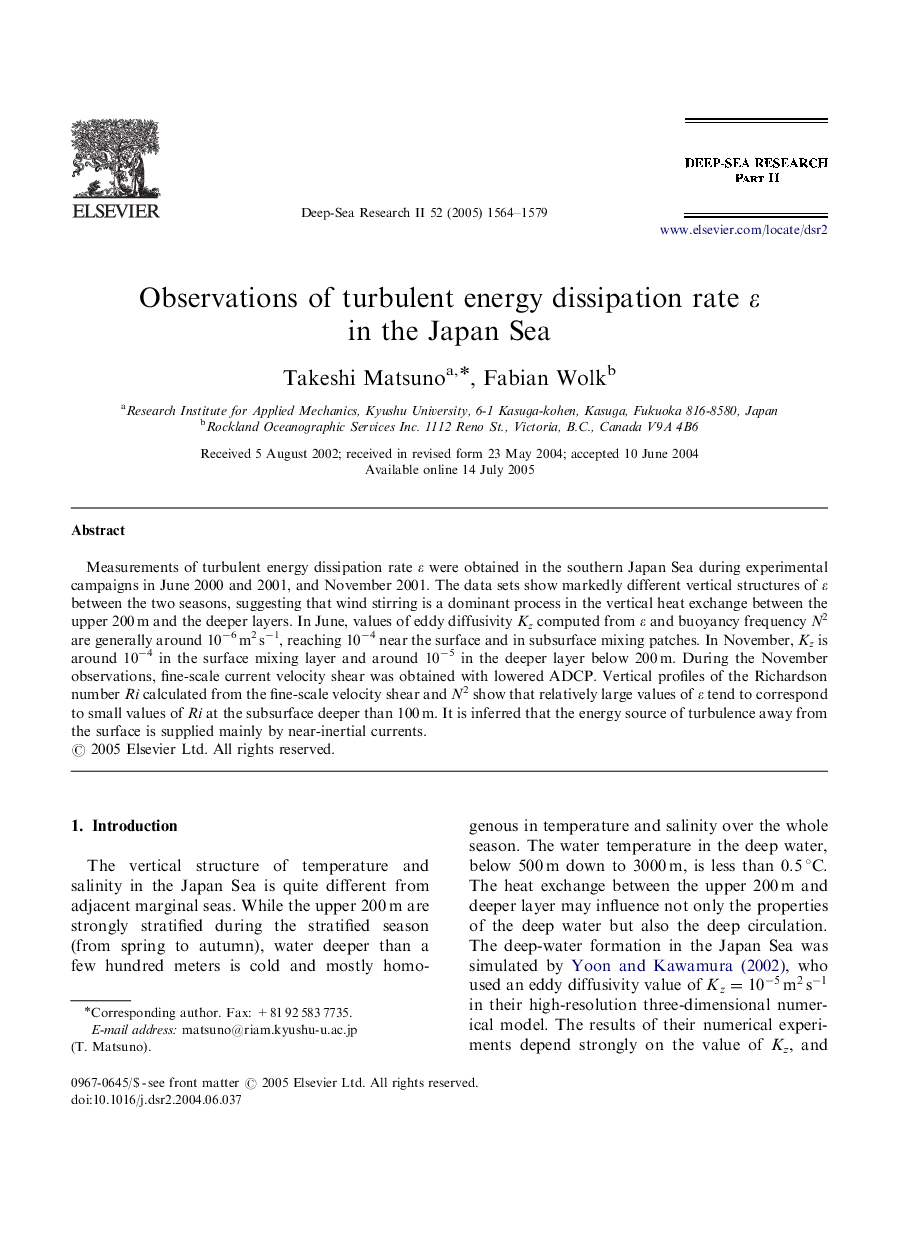| Article ID | Journal | Published Year | Pages | File Type |
|---|---|---|---|---|
| 9480090 | Deep Sea Research Part II: Topical Studies in Oceanography | 2005 | 16 Pages |
Abstract
Measurements of turbulent energy dissipation rate ε were obtained in the southern Japan Sea during experimental campaigns in June 2000 and 2001, and November 2001. The data sets show markedly different vertical structures of ε between the two seasons, suggesting that wind stirring is a dominant process in the vertical heat exchange between the upper 200 m and the deeper layers. In June, values of eddy diffusivity Kz computed from ε and buoyancy frequency N2 are generally around 10â6 m2 sâ1, reaching 10â4 near the surface and in subsurface mixing patches. In November, Kz is around 10â4 in the surface mixing layer and around 10â5 in the deeper layer below 200 m. During the November observations, fine-scale current velocity shear was obtained with lowered ADCP. Vertical profiles of the Richardson number Ri calculated from the fine-scale velocity shear and N2 show that relatively large values of ε tend to correspond to small values of Ri at the subsurface deeper than 100 m. It is inferred that the energy source of turbulence away from the surface is supplied mainly by near-inertial currents.
Related Topics
Physical Sciences and Engineering
Earth and Planetary Sciences
Geology
Authors
Takeshi Matsuno, Fabian Wolk,
